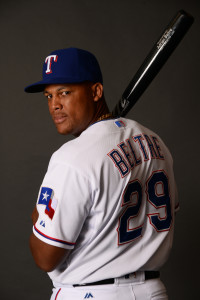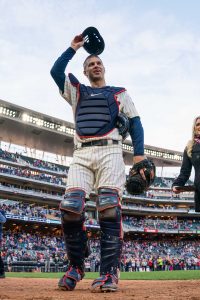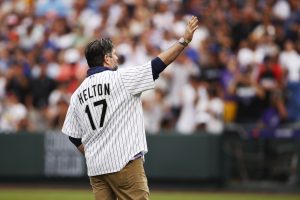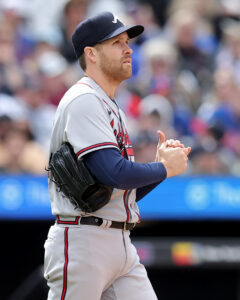28 out of the 30 clubs in the league currently have a full 40-man roster, with the Padres and Braves the only exceptions. That means that just about every transaction requires a corresponding move these days.
Some extra roster flexibility is on the way, as the 60-day injured list comes back when pitchers and catchers report to Spring Training, having gone away shortly after the conclusion of the World Series. This year, the Dodgers and Padres will have an earlier reporting date, due to their earlier Opening Day. Most clubs will begin their 2024 campaign on March 28, but those two clubs are playing a pair of games in Seoul on March 20 and 21. The official 60-day IL dates, per Joel Sherman of The New York Post, are February 8 for the Dodgers, February 11 for the Padres and February 14 for every other club. It’s fairly moot for the Padres since they only have 36 players on their 40-man roster right now, but the Dodgers could be moving guys to the IL as soon as today.
It’s worth pointing out that the “60 days” don’t start being counted until Opening Day. Although a team can transfer a player to the 60-day IL quite soon, they will likely only do so if they aren’t expecting the player back until end of May or later. Transferring a player to the 60-day IL also requires a corresponding move, so a club can’t just make the move in isolation.
There are still plenty of free agents still out there, including big names like Cody Bellinger, Matt Chapman, Blake Snell and Jordan Montgomery, as well as guys like Michael Lorenzen, Adam Duvall, Brandon Belt and many more. A player like Brandon Woodruff, who is expected to miss significant time and will need an IL spot himself, might be better able to secure a deal once IL spots open up. Perhaps the extra roster flexibility will spur some deals to come together in the next week or so. It could also increase the ability of some clubs to make waiver claims or small trades for players who have been designated for assignment.
Here are some players who are expected to miss some significant time and could find themselves transferred soon, sorted by division.
NL West
Diamondbacks: Drey Jameson
Jameson underwent Tommy John surgery in September of last year. He will almost certainly spend the entire 2024 season on the IL.
Dodgers: Clayton Kershaw, Dustin May, Tony Gonsolin, Nick Frasso
Kershaw is not officially signed yet, with his physical reportedly taking place today. It doesn’t seem as though it’s a coincidence that today is the first day the club can move players to the IL. He is recovering from shoulder surgery and not expected back until late in the summer. Gonsolin underwent Tommy John surgery in August and may miss the entire campaign. May had surgery in July to repair his flexor tendon as well as a Tommy John revision. He is expected to return at some point midseason. Frasso underwent labrum surgery in November and may miss the entire season.
Giants: Robbie Ray, Alex Cobb
The Giants acquired Ray from the Mariners in a trade last month, knowing full well that he underwent Tommy John surgery and flexor tendon repair in May of last year. He recently said that a return around the All-Star break would be a best-case scenario. Cobb underwent hip surgery in October and isn’t expected back until May at the earliest. His is a more of a borderline case since placing him on the IL would prevent him from returning until late May.
Padres: Tucupita Marcano
Marcano underwent ACL surgery in August of last year while with the Pirates. The Padres claimed him off waivers from the Bucs in November. Recovering from an ACL surgery usually takes about a year or so, meaning Marcano is likely to miss a decent chunk of the upcoming campaign. But as mentioned earlier, the Friars only have 36 players on their 40-man right now, meaning there’s no rush to get Marcano to the IL and open up a roster spot.
Rockies: Germán Márquez, Antonio Senzatela, Lucas Gilbreath
All three of these pitchers underwent Tommy John surgery last year. Gilbreath may be the closest to returning, as he went under the knife back in March. Márquez and Senzatela underwent their surgeries in May and July, respectively. General manager Bill Schmidt said recently that the club is hopeful Márquez can be back after the All-Star break but is anticipating Senzatela to miss the whole campaign.
NL Central
Brewers: None.
Cardinals: None.
Cubs: None.
Pirates: JT Brubaker, Mike Burrows, Johan Oviedo, Endy Rodríguez,
Brubaker and Burrows both underwent Tommy John surgery in April of last year. It’s possible they could be ready to go early in the upcoming season, as some pitchers return around a year after going under the knife. But most pitchers take 14 months or longer so their respective rehabs may push deeper into the upcoming season. Oviedo also underwent TJS but his was in November, meaning he’ll certainly miss the entire 2024 season. The same goes for Rodríguez, who underwent UCL/flexor tendon surgery in December.
Reds: None.
NL East
Braves: Ian Anderson, Penn Murfee, Ángel Perdomo
Anderson underwent Tommy John surgery in April of last year. He was on optional assignment at the time and spent the whole year on the minor league injured list. He could be placed on the major league IL this year if the club needs a roster spot, but they only have 37 guys on the 40-man as of today. Murfee underwent UCL surgery while with the Mariners in June of last year. The Braves signed him to a split deal even though he isn’t likely to be a factor until midseason. Perdomo also got a split deal despite undergoing Tommy John surgery in October of last year, meaning he will miss all of 2024. Since Murfee and Perdomo signed split deals, the club might try to pass them through waivers at some point rather than transferring them to the IL.
Marlins: Sandy Alcántara
Alcántara underwent Tommy John surgery in October and will have to miss the entire 2024 season.
Mets: Ronny Mauricio, David Peterson
Mauricio just suffered a torn ACL in December and will almost certainly miss the entire 2024 season. Peterson underwent hip surgery in November with a recovery timeline of six to seven months, meaning he won’t be able to return until May or June.
Nationals: Stephen Strasburg, Cade Cavalli, Zach Brzykcy
By all accounts, Strasburg will never be able to return to the mound due to nerve damage stemming from his battle with thoracic outlet syndrome. He and the Nats had a deal for him to retire but it reportedly fell apart due to some sort of squabble about his contract. His deal runs through 2026 and he may spend the next three years on the IL unless those retirement talks can be revamped. Cavalli had Tommy John surgery in March of last year, so he could return relatively early in the upcoming campaign. The Nats will probably only move him to the 60-day IL if they don’t think he can return before June. Brzykcy underwent Tommy John surgery in April of last year but was added to the club’s roster in November to keep him out of the Rule 5 draft.
Phillies: None.
AL West
Angels: José Quijada
Quijada underwent Tommy John surgery in May of last year and will miss some portion of the 2024 season. He’ll likely wind up on the 60-day IL unless the club expects him back within about a year of going under the knife.
Astros: Kendall Graveman, Luis García, Lance McCullers Jr.
Graveman recently underwent shoulder surgery and is expected to miss the entire 2024 season. García underwent Tommy John surgery in May of last year and will have to at least miss some of the upcoming campaign. Whether he goes on the 60-day IL or not will depend upon how his rehab is progressing. McCullers underwent flexor tendon surgery in June and isn’t expected back until late in the summer.
Athletics: Ken Waldichuk
In December, it was reported that Waldichuk is rehabbing from a flexor strain and UCL sprain. He and the club opted for a non-surgical approach involving a Tenex procedure and PRP injection. As of reporting from this weekend, he still hasn’t begun throwing. His situation will likely be monitored in the spring to see how his rehab proceeds.
Mariners: None.
Rangers: Jacob deGrom, Max Scherzer, Tyler Mahle, Carson Coleman
deGrom underwent Tommy John surgery in June of last year and is targeting a return this August. Mahle underwent the same procedure in May and the Rangers signed him to a two-year deal, knowing he likely won’t be able to return until midseason in 2024. Scherzer underwent back surgery in December and won’t be able to return until June or July. Coleman was a Rule 5 selection of the Rangers, taken from the Yankees. He had Tommy John in April of last year and will likely still be rehabbing for the early parts of the upcoming campaign.
AL Central
Guardians: Daniel Espino
Espino underwent shoulder surgery in May of last year with an estimated recovery timeline of 12 to 14 months. He was added to the club’s 40-man roster in November to keep him out of the Rule 5 draft.
Royals: Kris Bubic, Kyle Wright, Josh Taylor
Bubic underwent Tommy John surgery in April of last year and will have to miss at least some of the 2024 season. Whether he winds up on the 60-day IL or not will depend if the club thinks he can return before June. Wright underwent shoulder surgery while with Atlanta last year and will miss all of 2024. The Royals acquired him in a trade, hoping for a return to health in 2025 and beyond. Taylor was already on the IL due to a shoulder impingement in June of last year when he required surgery on a herniated disc in his lower back. His current status isn’t publicly known.
Tigers: None.
Twins: Josh Staumont
Staumont underwent surgery for thoracic outlet syndrome in July of last year while with the Royals. He was non-tendered by the Royals and then signed by the Twins. His recovery timeline is unclear at the moment.
White Sox: Matt Foster, Davis Martin
Both of these pitchers underwent Tommy John surgery last year, Foster in April and Martin in May. They could perhaps return early in the season if their rehabs go especially well, but they also might need to continue rehabbing until midseason.
AL East
Blue Jays: None.
Orioles: Félix Bautista
Bautista underwent Tommy John surgery in October of last year and will miss the entire 2024 season.
Rays: Jeffrey Springs, Drew Rasmussen, Shane McClanahan, Taylor Walls
Springs underwent Tommy John surgery in April of last year. He could be a factor in the early months of the season if his rehab is going well, as some pitchers can return after about a year, but he also may need a bit more time. McClanahan underwent the same procedure but in August and will likely miss the entirety of the upcoming season. Rasmussen was dealing with a flexor strain last year and underwent an internal brace procedure in July, which will keep him out until midseason. Walls underwent hip surgery in October and is more up in the air as there’s a chance he’s ready as soon as Opening Day, depending on how his rehab goes.
Red Sox: None.
Yankees: Jasson Domínguez
Domínguez underwent Tommy John surgery in September of last year. The return for hitters is generally shorter than pitchers, but the Yanks estimated his return timeline as 9-10 months, which will still keep him on the shelf until midseason.



